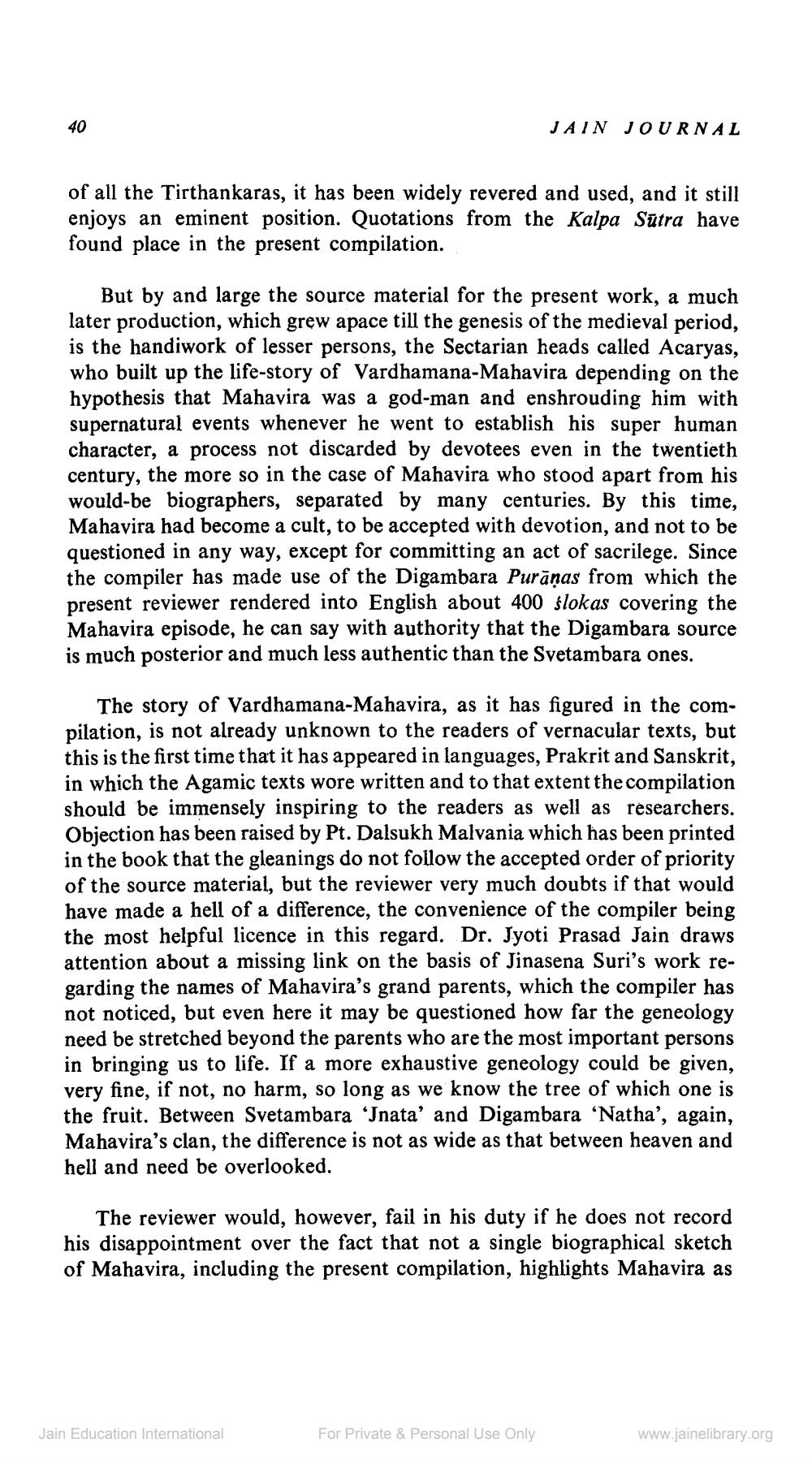Book Title: Jain Journal 1981 07 Author(s): Jain Bhawan Publication Publisher: Jain Bhawan Publication View full book textPage 5
________________ 40 of all the Tirthankaras, it has been widely revered and used, and it still enjoys an eminent position. Quotations from the Kalpa Sutra have found place in the present compilation. JAIN JOURNAL But by and large the source material for the present work, a much later production, which grew apace till the genesis of the medieval period, is the handiwork of lesser persons, the Sectarian heads called Acaryas, who built up the life-story of Vardhamana-Mahavira depending on the hypothesis that Mahavira was a god-man and enshrouding him with supernatural events whenever he went to establish his super human character, a process not discarded by devotees even in the twentieth century, the more so in the case of Mahavira who stood apart from his would-be biographers, separated by many centuries. By this time, Mahavira had become a cult, to be accepted with devotion, and not to be questioned in any way, except for committing an act of sacrilege. Since the compiler has made use of the Digambara Purāņas from which the present reviewer rendered into English about 400 slokas covering the Mahavira episode, he can say with authority that the Digambara source is much posterior and much less authentic than the Svetambara ones. The story of Vardhamana-Mahavira, as it has figured in the compilation, is not already unknown to the readers of vernacular texts, but this is the first time that it has appeared in languages, Prakrit and Sanskrit, in which the Agamic texts wore written and to that extent the compilation should be immensely inspiring to the readers as well as researchers. Objection has been raised by Pt. Dalsukh Malvania which has been printed in the book that the gleanings do not follow the accepted order of priority of the source material, but the reviewer very much doubts if that would have made a hell of a difference, the convenience of the compiler being the most helpful licence in this regard. Dr. Jyoti Prasad Jain draws attention about a missing link on the basis of Jinasena Suri's work regarding the names of Mahavira's grand parents, which the compiler has not noticed, but even here it may be questioned how far the geneology need be stretched beyond the parents who are the most important persons in bringing us to life. If a more exhaustive geneology could be given, very fine, if not, no harm, so long as we know the tree of which one is the fruit. Between Svetambara 'Jnata' and Digambara 'Natha', again, Mahavira's clan, the difference is not as wide as that between heaven and hell and need be overlooked. The reviewer would, however, fail in his duty if he does not record his disappointment over the fact that not a single biographical sketch of Mahavira, including the present compilation, highlights Mahavira as Jain Education International For Private & Personal Use Only www.jainelibrary.orgPage Navigation
1 ... 3 4 5 6 7 8 9 10 11 12 13 14 15 16 17 18 19 20 21 22 23 24 25 26 27 28 29 30 31 32 33 34 35 36 37 38 39 40 41 42 43 44 45 46
